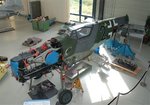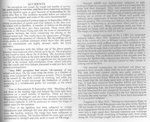- Thread starter
- #61
claidemore
Senior Airman
The 1942 document indicates to me that they knew they had a problem, but weren't sure exactly what it was. They addressed 3 likely causes, with a 4th cause added at the last minute by some braniac who was grasping at straws. Aileron paint?
One would think that lowering the dive speed limitations would have been counterproductive, instilling a lack of confidence in pilots. Unless; they were already losing confidence because of accidents attributed to wing breakage, real or imagined.
With regards to the landing gear popping open, the gear as i understand it is attached to the fuselage. (photos below, one from Axishistory website, the other I can't remember). I would assume then that a failure of the wing structure in that situation would be caused by forces on the wing from the empty wheel well?
One would think that lowering the dive speed limitations would have been counterproductive, instilling a lack of confidence in pilots. Unless; they were already losing confidence because of accidents attributed to wing breakage, real or imagined.
With regards to the landing gear popping open, the gear as i understand it is attached to the fuselage. (photos below, one from Axishistory website, the other I can't remember). I would assume then that a failure of the wing structure in that situation would be caused by forces on the wing from the empty wheel well?




